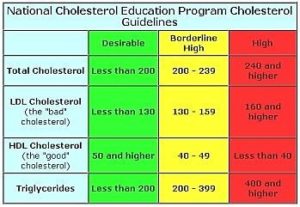Unlock the Power of Your Workforce
Maximize Your Team's Potential with our Human Performance Solutions
Cholesterol Management
Cholesterol Management
According to the Centers for Disease Control and Prevention, nearly 31 million Americans have high cholesterol. High cholesterol is defined as a total cholesterol level greater than 240 mg/dL. This means that one in every ten Americans is well over the ideal range of 200 mg/dL or less.

LDL (low density lipoprotein) – BAD cholesterol. LDL’s are soft and globular molecules, made up of cholesterol and protein. They carry cholesterol from the liver to tissues of the body. Normal LDL levels are necessary for healthy cell membranes and hormone production. Excessive LDLs essentially “clog up” blood flow. Their soft texture allows them to stick to blood vessel walls reducing blood flow throughout the body. Over time these sticky globs can harden into more permanent circulation restricting fixtures called plaque.
- Lower your LDLs by avoiding bad fats (saturated and trans) that will contribute to your LDL count. Common sources of bad fats:
- Processed snacks – chips, microwave popcorn, crackers.
- Sweets – soda, donuts, ice cream, cookies.
- Animal products – whole milk, butter, cheese, fatty meats (bacon, burgers, fried anything).
- HDL (high density lipoproteins) – GOOD cholesterol. LDLs are molecules made of a more fibrous composition. They do not stick to blood vessel walls like their counterparts and can actually break up the deposits caused by LDLs.
- Raise HDLs through consistent exercise and HDL friendly foods:
- HDL friendly foods – beans, nuts, whole grains, high fiber fruits (raspberries, mango, pears), cold water fish (salmon, mackerel, sardines, herring), flax and other seeds. Work a variety of these foods in to your regular routine.
- A minimum of 60 minutes of intense aerobic exercise is recommended per week in order to elevate HDL levels.
- Research supports that eating a meal high in healthy fats post workout may increase overall benefits to HDL.
Eating at home is the best way to manage a healthy diet. Planning meals ahead of time and precooking ensure that you are able to stay on track. The following meal plan options are based on the American Heart Association’s cholesterol friendly recommendations which are as follows:
- 25 to 35 percent of your total daily calories should come from healthy monounsaturated or polyunsaturated fats such as fish, nuts and vegetable oils.
- Saturated fats should only make up about 7 percent of your total daily calories. That means if you need about 2,000 calories a day, less than 140 calories (or 16 grams) should come from saturated fats.
- Trans fats should make up less than 1 percent of your total daily calories. That means if you need about 2,000 calories a day, less than 20 calories (or 2 grams) should come from trans fats.
| Meal # | Options |
|---|---|
| 1 | 1. Steel cut oatmeal, prepared with water, add cinnamon & flax seed. Egg whites scrambled, add salsa or seasoning for flavor 2. Greek scramble: egg whites, peppers and spinach, scrambled or omelet style (use extra virgin olive oil on pan). Two pieces of whole wheat bread toasted, no butter, natural jelly is okay. |
| 2 | 1. Almonds and apple slices. 2. Pico de Gallo (brown rice, egg whites scrambled, chopped pepper and other veggies). |
| 3 | 1. Whole grain, grilled chicken, extra veggies wrap. Season chicken with dry seasonings such as chili powder, paprika, Mrs. Dash. Recommended condiments: olive oil, vinegar, mustard. 2. Turkey club sandwich. Whole wheat bread, no cheese, no bacon, no mayo. |
| 4 | 1. Marinara based scallops and pasta. Scallop Pasta Recipe 2. BBQ pulled chicken sandwich with side salad. BBQ Pulled Chicken Recipe |
| 5 (optional) | 1. Raspberries and sliced almonds. 2. Steamed edamame. |
Cholesterol is extremely difficult to avoid entirely. So consider the necessary evils of real life when not every meal can be planned every time. Eating out is rarely as healthy of a choice as a home cooked meal. Know your low cholesterol options before you go to help you stick to smart choices and avoid unhealthy impulse eats.
McDonald’s (Cholesterol Estimate)
| Fruit and Yogurt Parfait | 5 mg |
| Chicken McGrill Sandwich (no cheese, no mayo) | 28 mg |
| Grilled Chicken Ceasar Salad (oil based dressing) | 22 mg |
Burger King (Cholesterol Estimate)
| Quaker Oatmeal | 5 mg |
| Veggie Burger (no cheese, no mayo) | 5 mg |
| Flame Grilled Chicken Burger (no cheese, no mayo) | 5 mg |
Dine In Restaurant (Cholesterol Estimate)
| Asian Salad (oil based dressing, no fried noodles) | 5 mg |
| Buffalo Grilled Chicken Wrap (no cheese) | 25 mg |
| Grilled grouper sandwich (no mayo, no cheese) | 31 mg |
Much of the cholesterol in our bodies is produced in the liver. High baseline cholesterol levels can sometimes be hereditary and your healthcare provider may recommend statin medications to control cholesterol levels. While statins are effective, they may lead to negative side effects such as liver damage, muscle aches and an increased risk of developing type II diabetes. It is best to first attempt to adjust your lifestyle through diet and exercise to control your cholesterol before deciding to rely on a statin. Still need more motivation to make the lifestyle changes mentioned above? Check out the following video for inspiration:
About SiteWell Solutions
SiteWell Solutions is committed to supporting business and organizations with health, wellness and injury prevention services. A healthy workforce is proven to be more engaged, productive and happier. It is our mission to deliver these outcomes to every organization we serve. Our services include onsite and virtual corporate wellness programs, industrial athlete training, injury prevention services, chronic disease management, employee resilience support services and much more. Contact info@sitewellsolutions.com today to find out how we can optimize your organization.
Health tips in your inbox
Our Services
Get in touch
Call us at +1 (321) 300-4338
Terms & Conditions | SWS App Privacy Policy
© SiteWell Solutions | 2025 All rights reserved
Site design by WebXDesigner.com
 LDL (low density lipoprotein) – BAD cholesterol. LDL’s are soft and globular molecules, made up of cholesterol and protein. They carry cholesterol from the liver to tissues of the body. Normal LDL levels are necessary for healthy cell membranes and hormone production. Excessive LDLs essentially “clog up” blood flow. Their soft texture allows them to stick to blood vessel walls reducing blood flow throughout the body. Over time these sticky globs can harden into more permanent circulation restricting fixtures called plaque.
LDL (low density lipoprotein) – BAD cholesterol. LDL’s are soft and globular molecules, made up of cholesterol and protein. They carry cholesterol from the liver to tissues of the body. Normal LDL levels are necessary for healthy cell membranes and hormone production. Excessive LDLs essentially “clog up” blood flow. Their soft texture allows them to stick to blood vessel walls reducing blood flow throughout the body. Over time these sticky globs can harden into more permanent circulation restricting fixtures called plaque.
